mobile View, to the German Version tap the flag


- Special Administrative Region of Hong Kong
- 1997–2020, autonomous territory at the Chinese coast
- 1842–1997, British crown colony
- own names:
· Cantonese Chinese: Hång Gång
· Mandarin Chinese: Xianggang
· English: Hongkong
• Flags
• Historical Flags
• Meaning/Origin of the Flag
• Coat of Arms
• Meaning/Origin of the Coat of Arms
• Map
• Numbers and Facts
• History
• Origin of the Country's Name
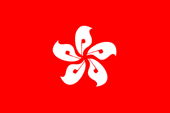
Flag of Hongkong,
ratio = 2:3,
Source, by: Flags of the World





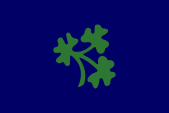
Flag of the Hongkong Cricket Team,
ratio = 2:3,
Source, by: crichomes.com



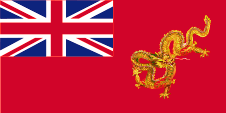
Flag of the independence movement,
ratio = 1:2,
Source, by: Hong Kong Independence Movement




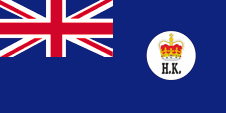
1871–1876,
Flag of the government (state flag),
ratio – ratio = 1:2,
Source, by:
Flags of the World



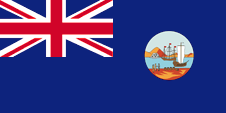
1876–1955,
Flag of the government (state flag),
ratio – ratio = 1:2,
Source, by:
Wikipedia (D)



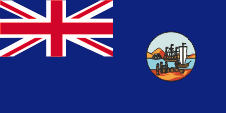
1955–1959,
Flag of the government (state flag),
ratio – ratio = 1:2,
Source, by:
Wikipedia (D)



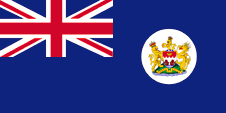
1959–1997,
Flag of the government (state flag),
ratio – ratio = 1:2,
Source, by:
Flags of the World





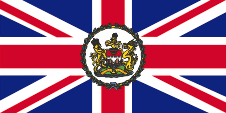
1959–1997,
Flag of the Governor,
ratio – ratio = 1:2,
Source, by:
Wikipedia (D)



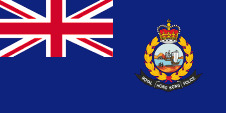
to 1997,
Flag of the Police,
ratio – ratio = 1:2,
Source, by:
scmp.com, Flags of the World




The today's flag, introduced on the occasion of the transfer of the crown-colony to China, is red and shows a white five-foliaged Bauhinia Blossom in the centre. The Bauhinia is the City Flower of Hong Kong already since the Britisch colonial time. Red is not only the colour of communism, coming over the land with the transfer to China, but it is the colour of the chinese Han-People, too.
The flag of Hong Kong as a British crown colony was the for British official flags usual Blue Ensign, so a blue bunting with the British Union Jack in the upper canton. It was already introduced in 1871 and showed finally the on the 25th of January 1959 awarded coat of arms inside a white disk. The coat of arms showed on the scutcheon two chinese sailboats with ever three masts and over there in the red shield-head a golden "seas crown". Shield holders were one lion (United Kingdom) and a dragon (China).
United Kingdom introduced a flag system in 1864 in which:
• war ships fly the "White Ensign" (naval flag), a white flag often with an uninterrupted red St. George's-Cross and with the Union Jack in the upper staff quadrant of the flag,
• merchant ships fly a "Red Ensign" (also named "Civil Ensign" => civil flag, the real merchant flag), a red flag with the Union Jack in the upper staff quadrant of the flag, and
• governmental ships fly the "Blue Ensign" (flag for the use by the gouvernment => the actual state flag), a blue flag with the Union Jack in the upper staff quadrant of the flag.
Since 1865 ships of colonial governments were permitted to fly the Blue Ensign with a badge in the flying end of the flag. The respective governments were asked to design appropriate badges. Merchant ships and seafaring persons from colonies were only permitted to use the Red Ensign with a badge, then also named Civil Ensign, if permission has been given to the respective colony by the British admiralty.
Such a badge was often a regional landscape representation placed on a disk, often showing ships, historical events or even a kind of a logo. Very often, a badge also showed the name of the country or a motto. Some British possessions, however, already had a coat of arms from the beginning, or their badge was replaced by a coat of arms over the years. To ensure a uniform appearance in the flying end of the flags, coats of arms and other symbols were displayed on a white disk in the size of the earlier badges. There were also exceptions, because some colonies did not use the white disk and placed their escutcheon or even coat of arms directly on the bunting, sometimes enlarged. Already in the '40s they started to remove the white disk and placed the coat of arms directly or enlarged. This conversion process was done gradually, nowhere at the same time and completely. In some British possessions, flags with the white disc are still in use, in others no more and in some areas are both variants in use, next to each other.
The flag of the Hong Kong independence movement, which wants to separate Hong Kong as a separate republic from China, is similar to a British Red Ensign. It is a red flag with the British Union Jack in the upper corner and a dragon in the flying end. The Union Jack stands for democracy and the western striking of the country. The red stands for the eastern culture, happiness and for the love of the Hong Kongers for their country. The dragon stands for the desire for freedom, for enthusiasm, talent and strength. The flag is expressly not to understood as the flag of the Republic of Hong Kong, but only as the flag of the movement.
Source:
Volker Preuß by: Wikipedia (D),
Hong Kong Independence Movement, and thanks to Siu Keung Albert Leung, Hongkong

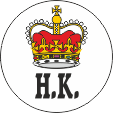
1871–1876,
Badge of the government of Hongkong,
Source:
Flags of the World

1876–1955,
Badge of the government of Hongkong,
Source:
Wikipedia (D)

1955–1959,
Badge of the government of Hongkong,
Source:
Wikipedia (D)
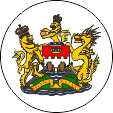
1959–1997,
Badge of the government of Hongkong,
Source:
Corel Draw 4
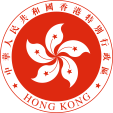
since 1997,
Badge of the government of Hongkong,
Source:
Wikipedia (DE)

The today's flag, introduced on the occasion of the transfer of the crown-colony to China, is red and shows a white five-foliaged Bauhinia Blossom in the centre. The Bauhinia is the City Flower of Hong Kong already since the Britisch colonial time. Red is not only the colour of communism, coming over the land with the transfer to China, but it is the colour of the chinese Han-People, too.
The flag of Hong Kong as a British crown colony was the for British official flags usual Blue Ensign, so a blue bunting with the British Union Jack in the upper canton. It was already introduced in 1871 and showed finally the on the 25th of January 1959 awarded coat of arms inside a white disk. The The coat of arms of Hong Kong is since 1997 a seal, a red disc with a white border, which in the center shows the white five-leaved Bauhini bloom, which can also be seen in the flag. The Chinese inscription is called "Special Administrative Region of the People's Republic of China Hong Kong". Below is in Latin letters: "HONG KONG".
Since 1865 ships of colonial governments were permitted to fly the Blue Ensign with a badge in the flying end of the flag. It was not until 1871, after considerable discussions, that such a badge was introduced. It simply showed the British crown and the letters "H.K.". The in 1910 introduced badge showed a harbor scene, presumably the view from Victoria to Kowloon, a European and a Chinese ship, and in the forefront goods and persons, who reaffirm a trade with handshake. About 1955 the badge was changed a little bit. The persons and goods in the foreground were enlarged.
In 1959 was introduced a coat of arms. It showed on the scutcheon two chinese sailboats with ever three masts and over there in the red shield-head a golden "seas crown". Shield holders were one lion (United Kingdom) and a dragon (China). However, some authorities (such as the police) maintained the old badge of 1910.
Source:
Wikipedia (DE), Flags of the World

Location:
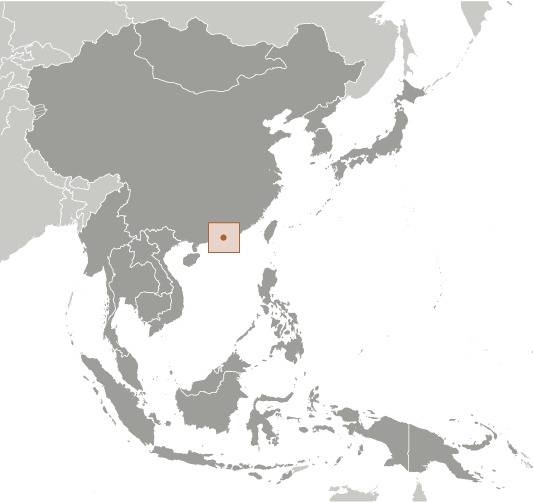
Source: CIA World Factbook
Map of the country:
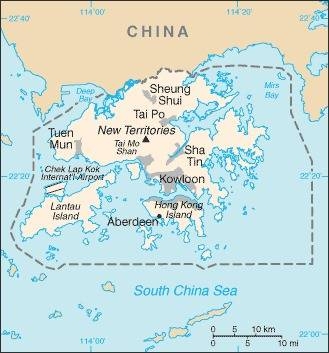
Source: CIA World Factbook

Area: 427 square miles, thereof Hongkong Island 31 sq.mi., New Territories Islands 368 sq.mi.
Inhabitants: 7.500.000 (2020)
Density of Population: 17.563 inh./sq.mi.
official Languages: Cantonese Chinese, English
other Languages: Indonesian (Bahasa Indonesia), Tagalog, Cebuano
Currency: 1 Hong Kong Dollar (HK$) = 100 Cents
Time Zone: GMT + 8 h
Source:
Wikipedia (D)

1842 · as a result of the first opium war the Hong Kong Island gets ceded to United Kingdom
1860 · United Kingdom purchases the Kowloon Peninsula and some smaller islands
1898 · United Kingdom leases the New Territories Islands for 99 years
1941 · Japan occupys Hong Kong
1945 · the Japanese troops in Hong Kong surrender
1956 · granting of internal self government for Hong Kong
1984 · negotiations about the return of Hong Kong
1997 · Hong Kong becomes given back to China after the end of the leasing contract but maintains leastways 50 years it's own legal, economy and society system, and United Kingdom maintaines the lawful duty for the defense of the existing freedoms in it's former colony Hong Kong
Summer 2019 · the government of Hong Kong is preparing the "Hong Kong extradition bill", which would allow the extradition and transfer of prisoners to the People's Republic of China, the people of Hong Kong are reacting with mass protests, the bill will be officially withdrawn on 23rd of October in 2019, the protest against the however, growing Chinese influence continues
30th of June 2020 · the Standing Committee of the National People's Congress of the People's Republic of China unanimously adopts the "National Security Protection Law", which grants the Chinese central government extensive powers in Hong Kong, which was announced in May 2020, and some organizations in the democratic spectrum in Hong Kong voluntarily disband themselves
1st of July in 2020 · the "National Security Protection Law in Hong Kong" comes into force, demonstrations in Hong Kong become banned and arrests are made on the same day, the autonomy of Hong Kong is in this way effectively deprived
Source:
Atlas zur Geschichte,
World Statesmen,
Discovery '97,
Wikipedia (DE)

The name "Hong Kong" goes back to the bad transfer of the Chinese name "Xianggang", which does not quite correctly represent the meaning of the Chinese words as a "fragrant harbor". Supposedly, this means in this way "stinking harbor".
Source:
Handbuch der geographischen Namen


![]()



































